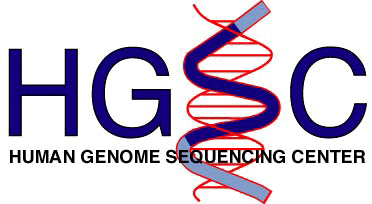
The Human
Genome

The National Institutes of Health (NIH) is a biomedical research facility. This facility is the prime agency of the United States government that is responsible for research dealing with biological medicine and health. In the 1990s, the focus of the NIH committee was to research DNA, so the Human Genome Project was initiated. In 2009, President Obama got rid of the banning on stem-cell research funding that was imposed in 2001. The Human Genome Project was funded from the United States government through the NIH, making it possible to sequence the human genome. (4.2)
The Innovators and Advances of the Human Genome
The Human Genome Project (HGP), the world’s largest collaborative project, is an international scientific research project to determine the DNA sequence of the entire human genome. After this project was approved by the United States government, it begun in 1990 and was accomplished in 2003. At first, The Human Genome Project intended to map the nucleotides contained in a human haploid reference genome (more than three billion). Each person’s genome is unique, so mapping the human genome involved sequencing multiple variations of each gene. In May 2016, scientists considered extending the HGP to include creating a synthetic human genome. (4.1), (4.3)
Human Genome Project
National Institutes of Health
United States Department of Energy
James Watson
James Watson is recognized as a co-discoverer of the DNA structure with Francis Crick. When Watson helped establish the Human Genome Project through his correlation with the National Institutes of Health (NIH), he was designated as the head of the Human Genome Project between 1990 and 1992. The Human Genome Project may have been hard to complete without Watson’s discovery of the DNA structure. Watson published his sequenced genome online in 2007, being the second person to do so. He was quoted as saying "I am putting my genome sequence on line to encourage the development of an era of personalized medicine, in which information contained in our genomes can be used to identify and prevent disease and to create individualized medical therapies". (4.5)
Eric Lander
Eric Lander was one of the leaders of the Human Genome Project. Without Lander’s collaboration in creating the first genetic map of the entire human genome in 1987, it may have been impossible to map the genes for individual traits to specific locations on the chromosomes. The genetic and physical maps of human genomes created by Lander’s group provided a necessary foundation for human genome sequencing. In addition to Lander’s contribution to the Human Genome Project, he was also the leader of bioinformatics specialists who analyzed the genome sequence. (4.6)
McDonnell Genome Institute at Washington University
A major part of the Human Genome Project was completed by the McDonnell Genome Institute, contributing to over one-fifth (20%) of the draft sequence and providing a BAC clone map of the human genome. "In addition, the McDonnell Genome Institute identified more than 300,000 single nucleotide polymorphisms." (4.7)
Baylor College of Medicine Human Genome Sequencing Center
The Baylor College of Medicine Human Genome Sequencing Center (BCM-HGSC) was selected to complete the final stage of the Human Genome project among five other worldwide sites. In 2004, it was funded to be involved in completing the first human genome, contributing to about 10% of the Human Genome Project by sequencing the chromosomes 3, 12, and X. (4.8)
Wellcome Trust Sanger Institute
The Wellcome Trust Sanger Institute completed almost a third of the sequencing in the Human Genome Project. "Of the 2.9 billion letters of DNA code that have been read, the Wellcome Trust Sanger Institute has contributed more than 0.8 billion - 30%. Originally committed to sequencing one-sixth of the human genome, the Wellcome Trust Sanger Institute increased its investment in 1998 to allow the institute to decode one-third of the genome, that of chromosomes 1, 6, 9, 10, 13, 20, 22 and X." (4.9)
How the Completed Human Genome is Being Used:
Many genome sequencing projects have been set up since the completion of the Human Genome Project for understanding of the genome biology. You can read about some of these project below.
International HapMap Project
With the sequenced human genome available, the International HapMap Project was created to “speed up the discovery of genes related to common illnesses such as asthma, cancer, diabetes and heart disease” in October 2002. The International HapMap Project developed a ‘catalogue’ to describe the variations that occur in our DNA as well as “how they occur and how they are distributed among populations around the world.” (4.10)
ENCODE Project
ENCODE (the Encyclopedia of DNA Elements) was established in September 2003 to identify and distinguish all functional aspects of the Human Genome Project in order to display the function of the genome. In 2012, the ENCODE resource provided an operating manual for the human genome, affirming that about 21,000 genes carry the codes for constructing proteins and identifying an additional 9,000 genes that have a significant impact our cells. “They also announced that 80 percent of the human genome sequence is close to regions that control biological function; this meant that most of what was once considered “junk DNA”, the non-coding DNA in the human genome, is actually functional.” (4.10)
1000 Genomes Project
In 2008, the 1000 Genomes Project aimed to sequence the genomes of many people in order to supply a source on human genetic variation, and to construct a comprehensive catalogue specifically to assist scientists who are studying people with certain diseases. With the use of next-generation sequencing technologies, more than 2,500 genomes of anonymous people were sequenced, coming from 26 different populations around the globe.The data gathered from the study are accessible to the public and researchers worldwide. (4.10)












Learn More About the History Behind Sequencing the Human Genome:
Watch this video to learn more about the strategies and technologies used by the innovators when sequencing the human genome.

